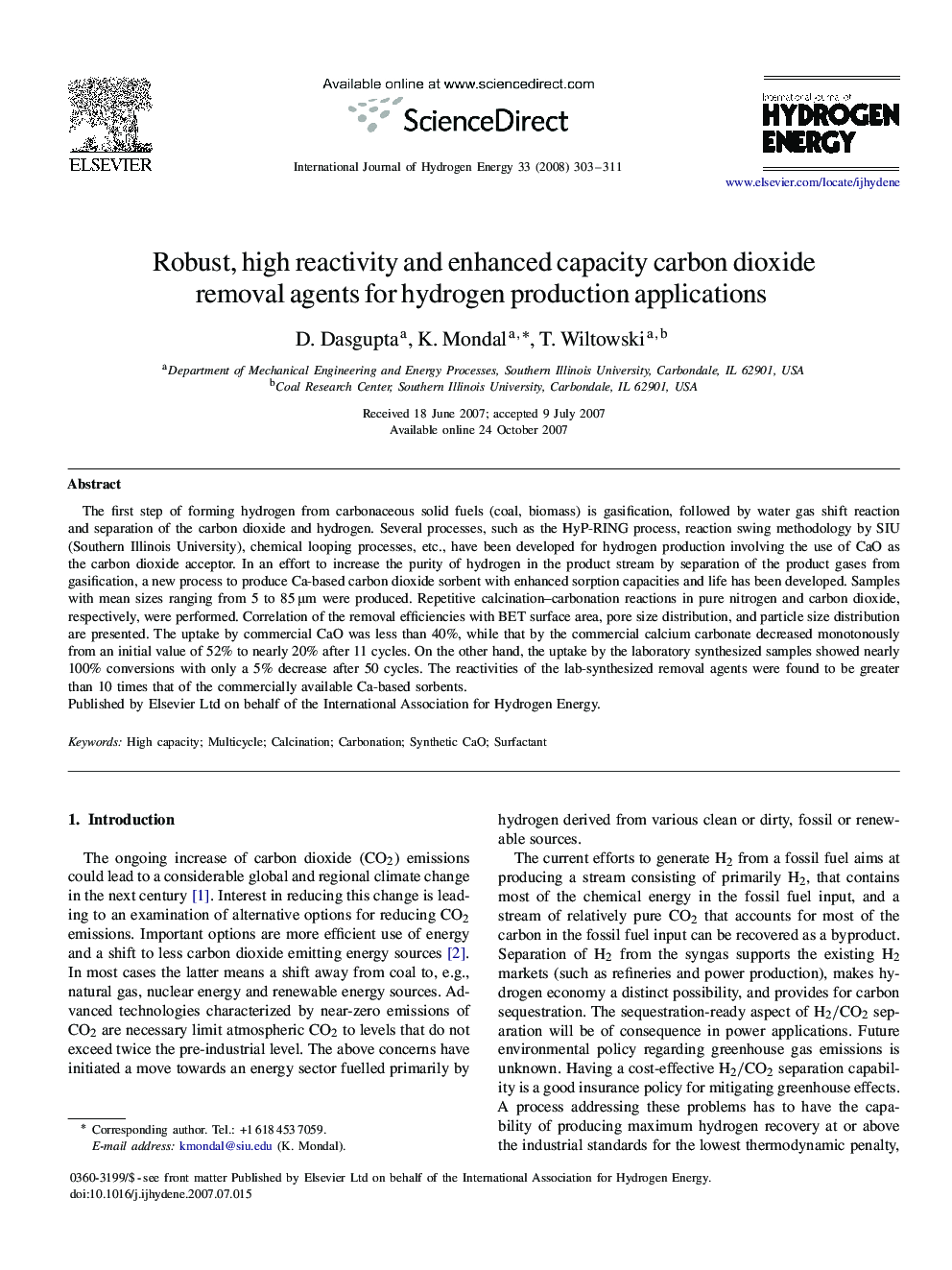| Article ID | Journal | Published Year | Pages | File Type |
|---|---|---|---|---|
| 1279467 | International Journal of Hydrogen Energy | 2008 | 9 Pages |
The first step of forming hydrogen from carbonaceous solid fuels (coal, biomass) is gasification, followed by water gas shift reaction and separation of the carbon dioxide and hydrogen. Several processes, such as the HyP-RING process, reaction swing methodology by SIU (Southern Illinois University), chemical looping processes, etc., have been developed for hydrogen production involving the use of CaO as the carbon dioxide acceptor. In an effort to increase the purity of hydrogen in the product stream by separation of the product gases from gasification, a new process to produce Ca-based carbon dioxide sorbent with enhanced sorption capacities and life has been developed. Samples with mean sizes ranging from 5 to 85μm were produced. Repetitive calcination–carbonation reactions in pure nitrogen and carbon dioxide, respectively, were performed. Correlation of the removal efficiencies with BET surface area, pore size distribution, and particle size distribution are presented. The uptake by commercial CaO was less than 40%, while that by the commercial calcium carbonate decreased monotonously from an initial value of 52% to nearly 20% after 11 cycles. On the other hand, the uptake by the laboratory synthesized samples showed nearly 100% conversions with only a 5% decrease after 50 cycles. The reactivities of the lab-synthesized removal agents were found to be greater than 10 times that of the commercially available Ca-based sorbents.
